Every few months, some new diet fad claims to be the sure-fire way to lose weight quickly. Whether its drinking cayenne water, eating 4 grapefruits a day or cutting out carbs completely, you’ve probably tried at least one crazy diet in hopes of losing a few extra pounds. While we aren’t saying that those diets can’t be effective, some can have negative effects on your body and others are just downright dangerous. If you are trying to cut a few pounds, there is one diet that is safe and effective for all body-types, a calorie count diet plan.
Simple logic tells us that if you eat more calories than you burn, you’ll put on weight. Well, the opposite is also true – eating a few fewer calories than you burn every day can help you lose weight without any of the negative consequences to your metabolism that other diets pose.
Contrary to popular belief, a calorie count diet plan doesn’t mean you are fasting or cutting out most of your daily diet. In reality, you can eat almost the same amount of food as you do now on a daily basis. Just instead of eating high-calorie food, you focus your diet on primarily lower-calorie options; and exercising means burning more calories, so the more exercise you get in a day, the more calories you can eat.
How Many Calories Should I Eat?
Most people base their diet on a 2,000 calorie a day plan because we are often told that we should consume about 2,000 calories per day. This 2,000 calories number is very generic and does not apply to the vast majority of people.
Your daily calorie intake is actually based on a number of factors including sex, age, height, weight, and level of activity per day.
Before you start a calorie count diet plan, you should determine how many calories you are actually supposed to eat per day. This is as easy as a simple web search – many websites offer calorie calculators for free, which are easy to use and quickly calculate your daily calorie intake number.
How Many Calories Do I Need to Cut to Lose Weight?
Once you have determined your calories per day, it is time to decide how you want to take on your calorie count diet plan. There are two options:
- Increase your exercise levels and maintain your calorie intake
- Maintain your exercise levels and decrease your calorie intake
Whether you choose option 1 or option 2, you should try and change your calorie-differential by a ratio of about 500 calories per day. This equals about 3,500 calories per week, which translates to a loss of about 1-2 lbs per week for a normal individual.
For option 1, this means that you should try to burn about 500 calories per day more than you do now through exercise while maintaining your calorie intake per day.
For option 2, this means that you should try to eat about 500 fewer calories per day than you do now while maintaining your current exercise levels.
You are probably thinking, “who has time to burn 500 calories extra per day?” or “how am I supposed to eat 500 fewer calories per day?”, and you wouldn’t be alone if you are. Most people don’t think that these expectations, by themselves, are very rational. That is why the most successful calorie count diet plans are usually harbored through compromise between option 1 and option 2.
Most people who find success in a calorie count diet plan meet their calorie differential goal by a mix of increased exercise and a moderate reduction in daily calorie intake. The end-goal is to cut about 500 calories per day. That may mean burning 300 calories through exercise and cutting 200 calories from their intake for some people – for others, it may mean burning 100 calories through exercise and cutting 400 calories from their intake. The plan is specific to the individual’s lifestyle. You should take time to figure out the best plan for you.
How Do I Count Calories in Food?
Counting calories in your diet is actually a lot easier than most people presume. Thanks to modern technology, there are tons of calorie counting apps that are available for free for your phone. These apps are easy to use, all you do is type in the food you are eating and the number of portions, and the app will add it to your daily calorie count. Some free apps will even allow you to look up restaurants and scan barcodes, so you don’t have to look up the calories yourself.
If you want to go the more traditional route, you can always count yourself using the old-fashion method, reading the package, and adding up yourself (we aren’t great at math – we suggest the app).
How Do I Determine How Many Calories I have burned?
Again, the capabilities of modern technology have made this process much easier for us. If you have an activity monitor – iWatch, FitBit, etc. – you can turn on the calorie-burning monitor in order to keep track.
If you don’t have an activity monitor, there are tons of free apps that will track your calorie output too. First, you will need to determine how many calories your body burns without exercise. This depends on your sex, age, weight, height, level of sleep per night, level of normal activity per day, and other factors. Use a calorie output calculator to determine your average daily output. These calculators are also available for free online.
Calorie Count Diet Plan – How to Avoid Feeling Hungry
After a few weeks, your body will naturally adjust to lower calorie intake levels and you won’t have to struggle with hunger. But, for the first days or weeks, your body will likely craze more food than your calorie count diet plan allows.
Here are a few easy ways to combat these feelings of hunger:
- Drink a ton of water throughout the day, especially before you eat and when you are feeling hungry.
- Cut out high-calorie drinks such as dairy, sodas, and juices. Substitute these drinks with water, carbonated water, tea, and coffee.
- Find low-calorie foods that fill you up. There are tons of slow-digestive low-calorie foods to snack on that will keep you feeling full throughout the day.
- Avoid large meals. Eat a few smaller meals throughout the day so that you can snack in between them.
Are Calorie Count Diet Plans Safe?
As long as you don’t overdo it, yes, calorie count diet plans are safe. If you increase your calorie deficit to extreme levels, it can become unsafe.
You should not start a new calorie count diet plan if you are pregnant, sick, or a minor.
Some people report some fatigue, hungriness, and stomach uneasiness at the start of their calorie count diet plan. If these issues persist, you should stop and consult your healthcare provider.
For most people, a calorie count diet plan is completely safe and can actually offer a number of health benefits including:
- Increased energy levels
- Reduced risk of illness
- Increase in mood
- Increase in sleep levels
- Weight loss
Consult a Nutritionist Before Starting a Calorie Count Diet Plan
Before you begin your calorie counting journey, you should speak with a nutritionist or specialist to come up with the best plan for you.
E’ville Fitness offers a range of health and wellness services, including nutrition programs. Come in and talk to an experienced and well-knowledged member of our training staff about your calorie count diet plan today.
By: Jordan Terry, E’ville Fitness Marketing






Leave A Comment